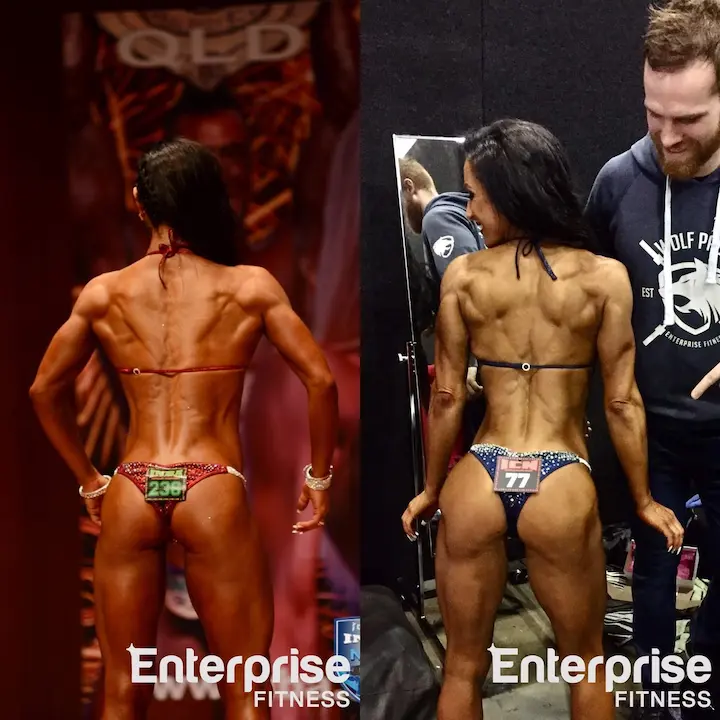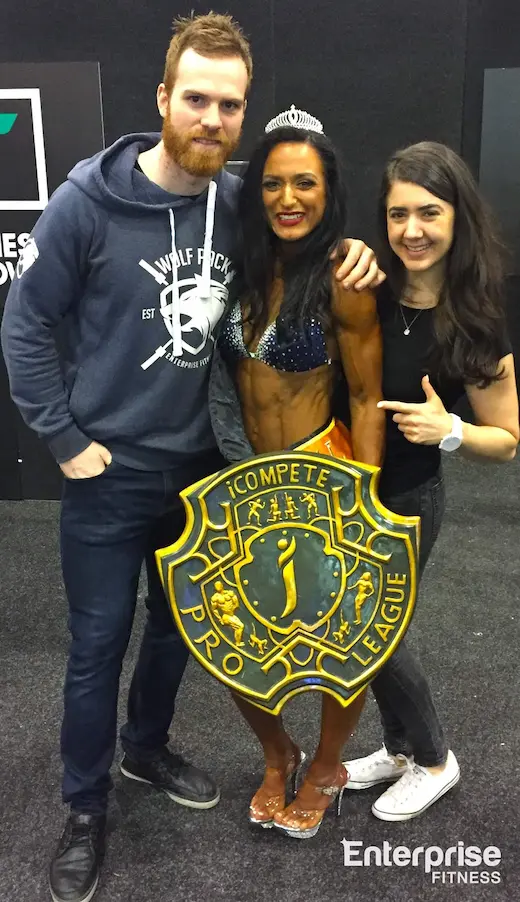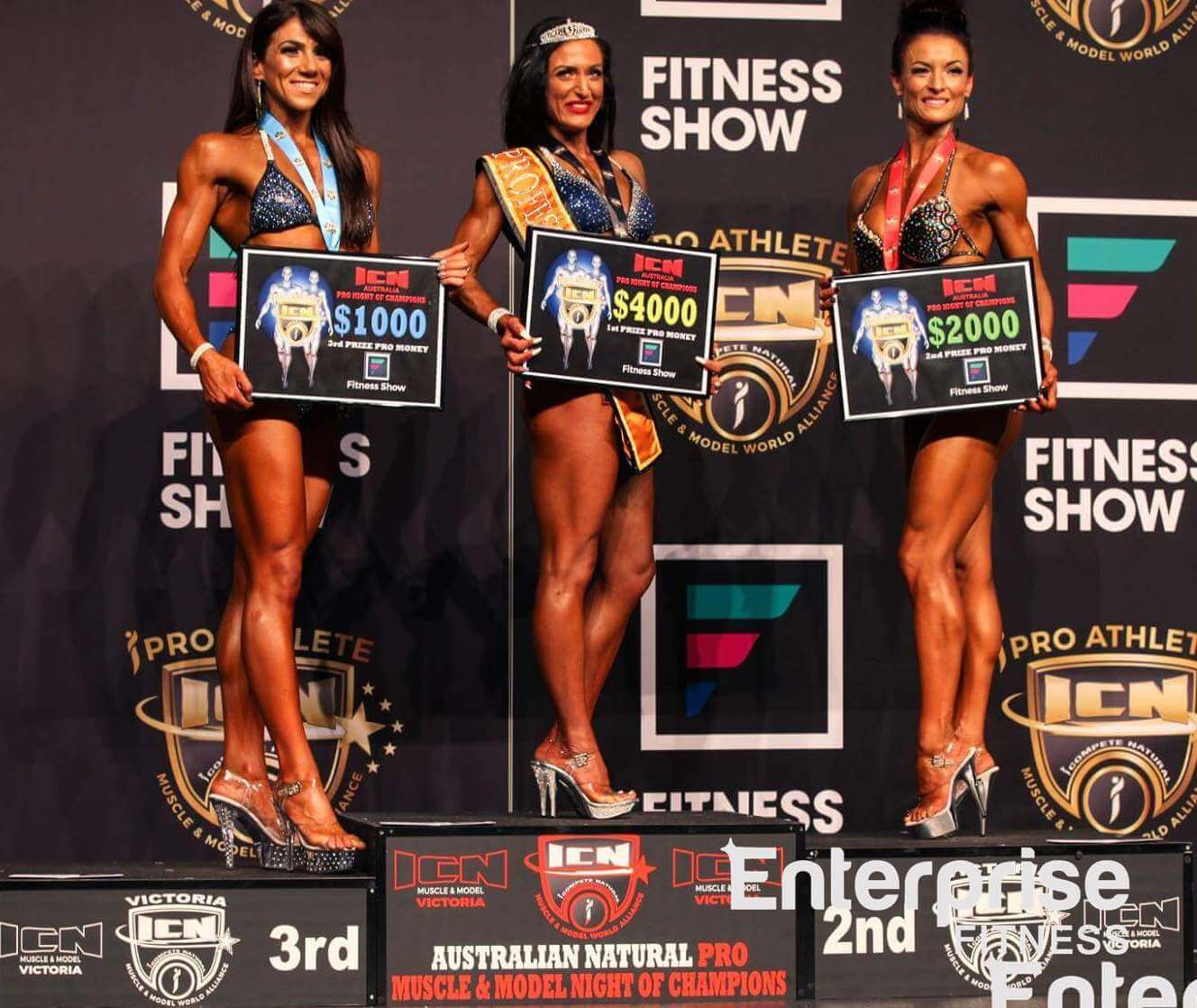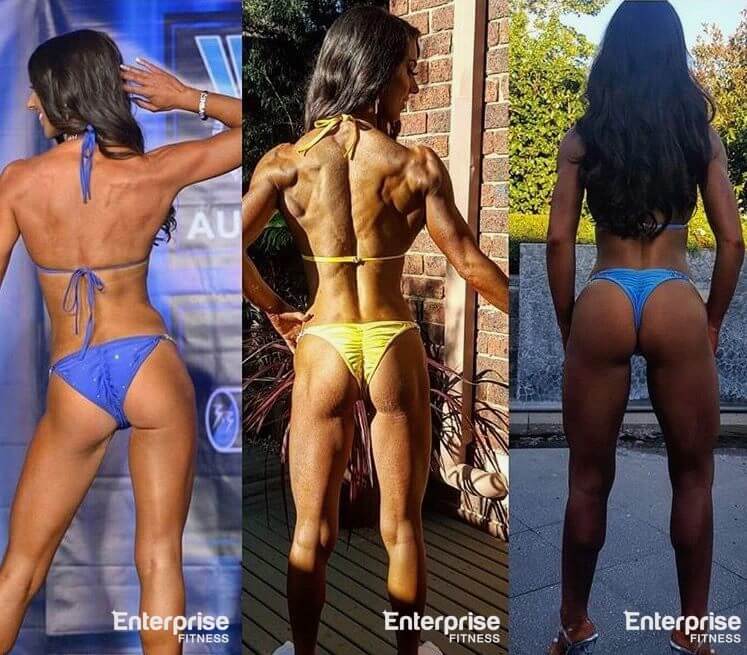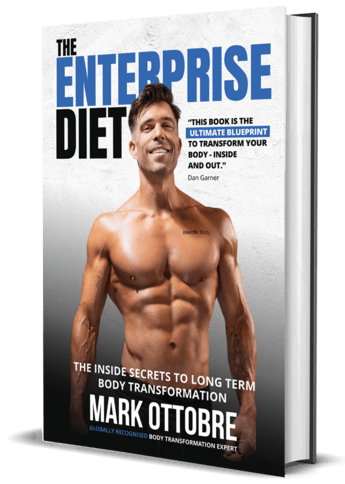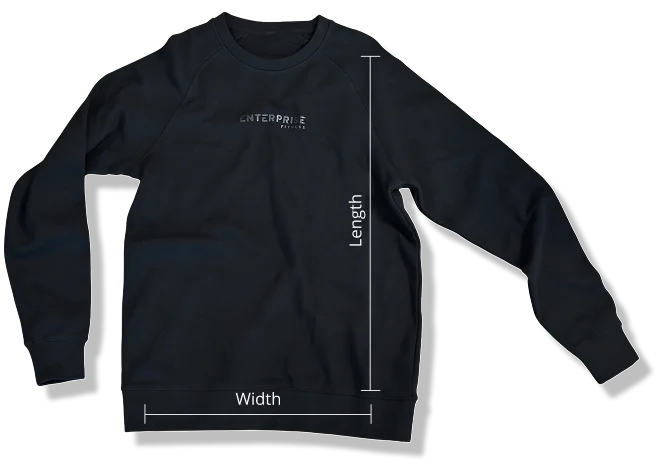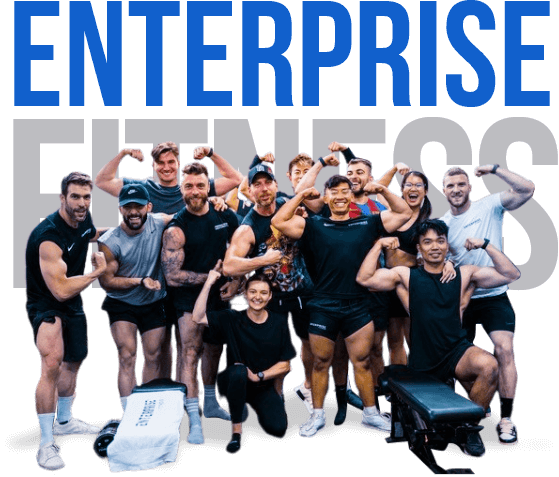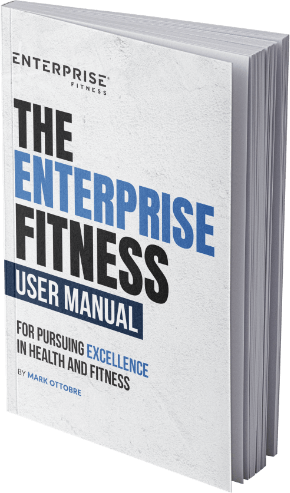Remember Enterprise member, Kate Keown’s epic win at the ICN Melbourne Pro Show last year?
This show had us hanging in our seats… She was the 3rd girl to make her debut in the Pro Fitness Model lineup of 17 INCREDIBLE girls. It was a grueling, nail biting performance as the judges spent more than an hour deliberating and rearranging girls on stage to come to their final decision and to pick a winner….
And guess who won the overall? Yep – it was our very own Kate Keown!
So we asked Master Coach, Reece Adams (a.k.a. the White Wizard) to share the secrets behind a pro winner’s physique like Kate’s – we promise this is one hell of a read!
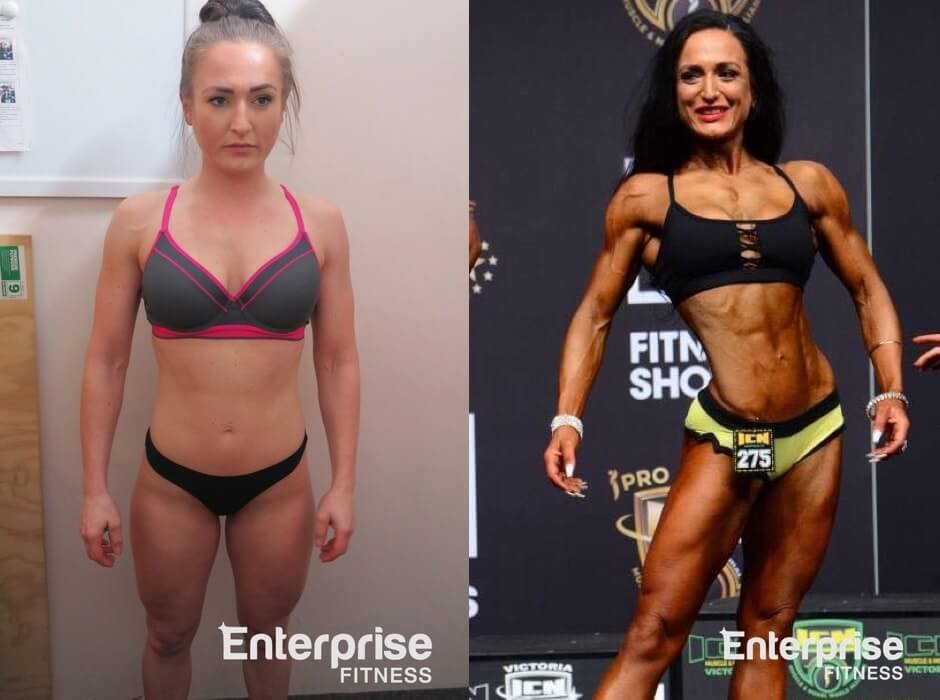
Nutrition
Kate first came to me in 2016 with a very short time frame of 10 weeks to get her ready for her competition. This didn’t give us much margin for error and the ability to play around with her food.
Anyone who works with or is a very successful competitor will understand how individual nutrition can be.
For example, Kate’s fluid retention would increase noticeably throughout the day. Took work out what was causing this, she would send me photos each morning and afternoon and we would include a particular food until we had isolated the cause. As it turns out, it was broccoli. Now, by no means am I saying that broccoli is bad. The point is, nutrition is very individual.
Another example is that back-to-back high carb days work EPIC for Kate and carb cycling on alternate days doesn’t work for her, but works AMAZING for another one of my competitors Sarah.
Coming out of Kate’s 2016 comp prep we put a big emphasis on getting her metabolic capacity as high as possible whilst keeping body fat in check. We used a cyclical keto approach, which enabled us to get her having a good amount of both fats and carbs throughout the week. Fats going as high as 150g+ and carbs going as high as 560g+, which is impressive for a girl who weighs only 53 to 58kg. This isn’t an approach I’d recommend using with everyone.
This enabled us to start with a high metabolic capacity going into her next comp prep.
In my opinion the best starting point for a prep is having as high a metabolic capacity as possible whilst doing the least amount of activity to sustain the amount of food eaten.
To enable her to keep making progress we adjusted her nutrition and cardio with refeeds throughout to keep her recovery and performance at a high level. We learnt that refeeds worked well for Kate in her previous prep since dropping her food further would cause her body fat and weight to increase. (Fun fact: This is where my nickname The White Wizard came from because Kate struggled to comprehend eating more would enable her to lose body fat.)
Training: An 18 week prep (which includes 2 de-load weeks)
For 12 weeks leading up to Kates comp prep we did a LOW volume – LOW training frequency phase. This consisted of 3 days training with 4 exercises p/session. All compound movements with majority of reps being around 5 to 8 reps and 3 sets p/exercise. Focusing on increasing her strength and reducing her metabolic stress that had built up over her previous years of comp prep. Cardio was purely optional. If she chose to do it, it would be a 15-30 minute walk.
Training Periodization
- Program 1 – 4 weeks – Frequency 4 x p/week
Focus – Activation focus e.g High Reps/Low intensity (meaning lighter weights) - Program 2 – 4 weeks – Frequency 5 x p/week
Focus – Descending reps/ Increasing intensity (meaning greater loads – progressive overload) - Program 3 – 4 weeks plus 1 deload week (5 weeks total) – Frequency 6 x p/week
Focus – Still Descending reps/ continuing to reduce the reps to keep the loads increasing - Program 4 – 4 weeks plus 1 deload week into comp (5 weeks total) – Frequency 6 x p/week
Focus – Finally lower reps again and also some volume work with 10 reps x 6 to 8 sets - **Drop sets were sprinkled throughout her programs
When putting an emphasis on gaining muscle tissue in a specific area – pick indicator lifts that stay consistent throughout all phases to enable you to track progress. Start with higher reps and lighter loads to enable proper muscle activation and only start to reduce reps if you can sustain the same quality of muscle contraction with heavier loads.
When training a particular muscle group twice a week, I’ve found great success in doing the same indicator lift in both workouts but with varied rep ranges (eg 1 day heavier, and then the other day lighter with more volume emphasis). Some might need to do additional activation exercises paired with the indicator lift to maximize recruitment. I’ve found banded abductions to work well for this.
If a sudden strength reduction occurs, it may signal that they are getting too depleted and may need a re-feed, or if they may not be prioritizing their sleep or food. Also works well from a progressive overload perspective which is one of the fundamentals of gaining muscle tissue given its done in the right rep range.
For Kate the indicator lift we used for her glutes was glute bridges (hip thrusts) on a bench. I chose glute bridges over box squats or sumo squats because the weakest link in these squats is often the lower back, which inhibits you from really challenging the glutes to their full capability. On the other hand, glute bridges (if done correctly) has very little risk or inhibition from the lower back.
Cardio
We started at 30 mins 3 times a week then we increase frequency before increasing duration. Finishing on 60 mins for the last 2-4 weeks
Why steady state? – Because I want energy expenditure that doesn’t take away from her recovery from workout to workout. I want to keep an emphasis on her weight training to maximize her strength and overall body composition.
Want more?
I have another competitor, Sarah, who took out 2nd place at the recent Arnold’s Classic IFBB Bikini. Stay tuned for another article on how we re-vamped Sarah’s physique from ICN Fitness/borderline Figure to IFBB bikini! 😉
Reece Adams
Master Coach
Enterprise Fitness
Related Posts
